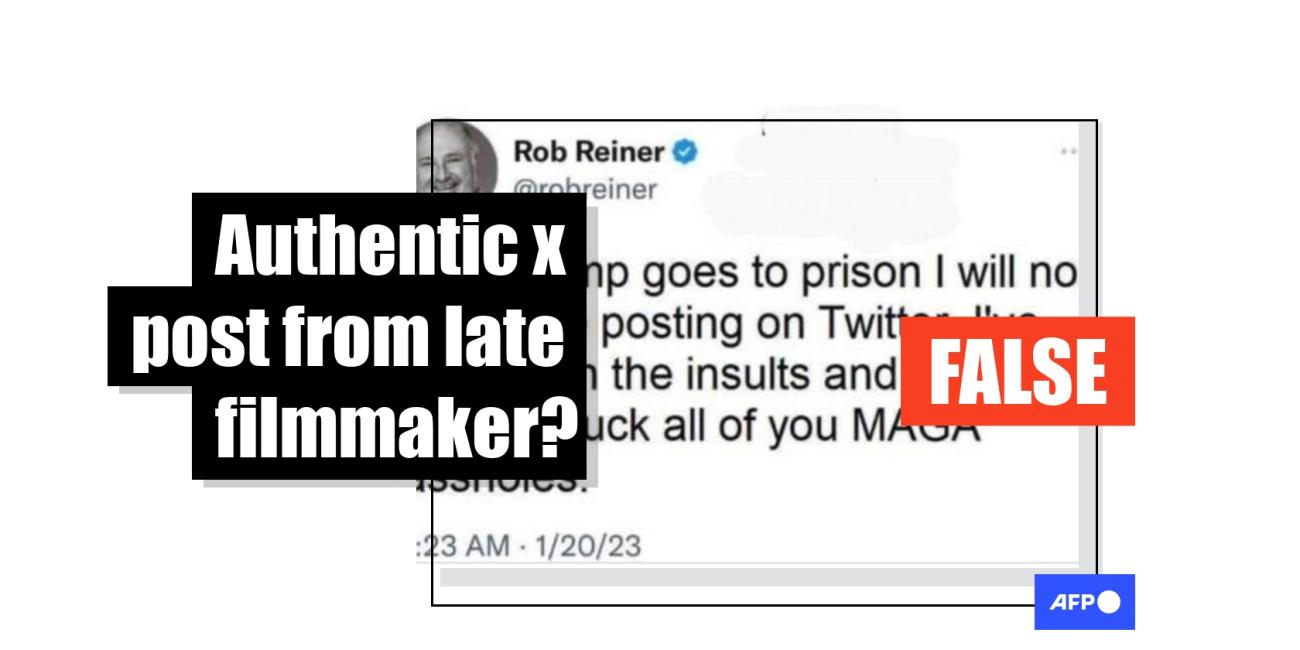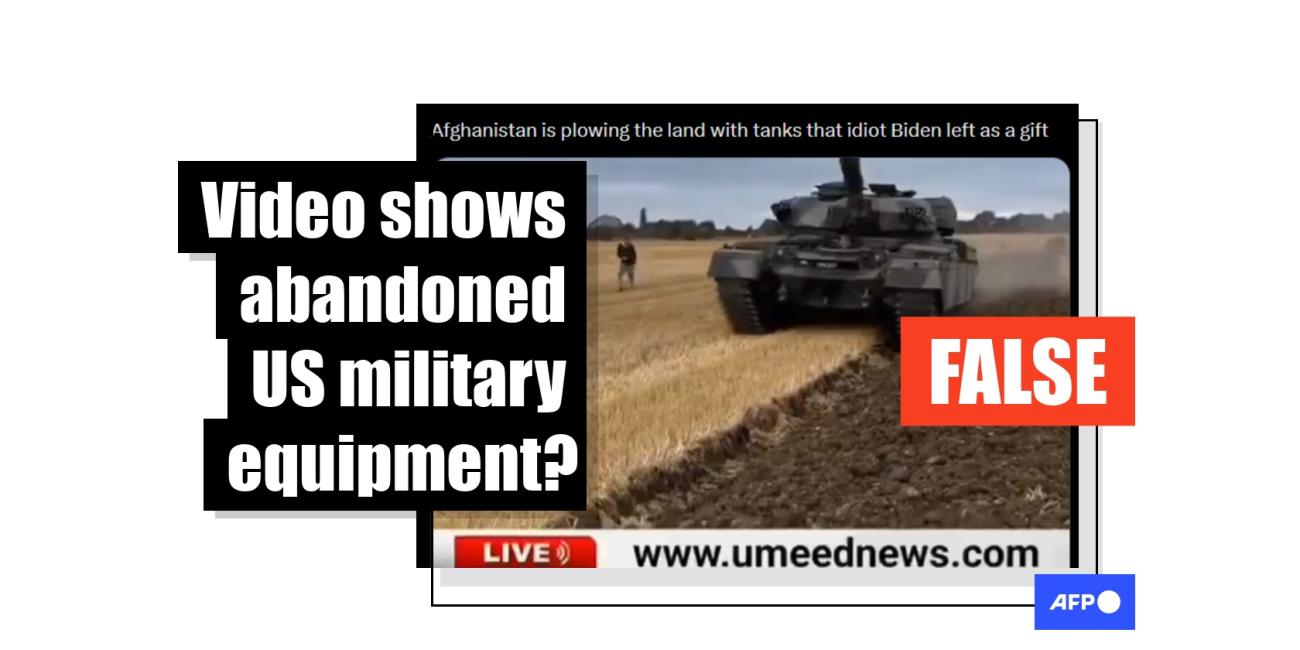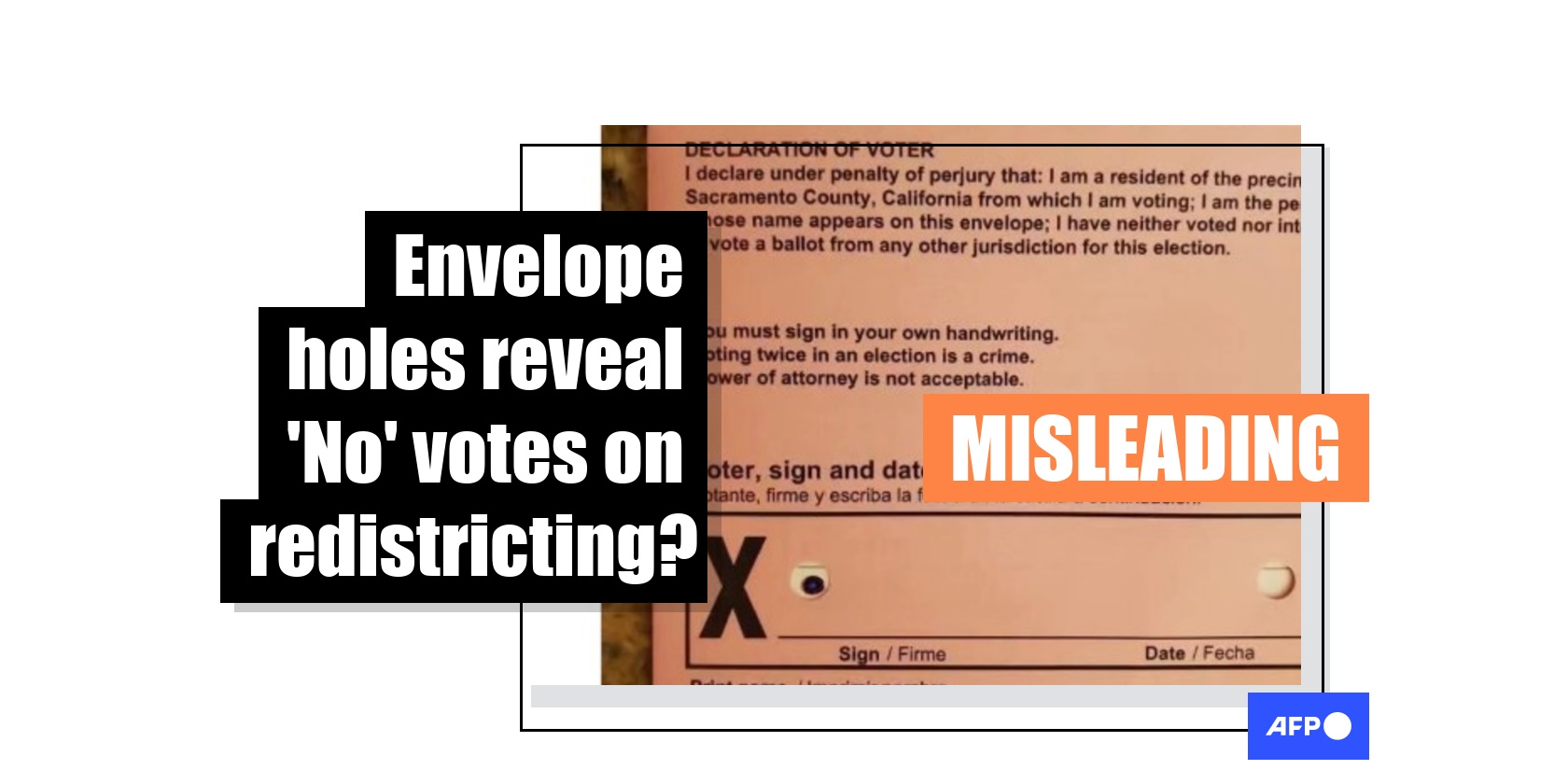
Misinformation targets accessibility feature of California mail ballots
- Published on October 23, 2025 at 20:19
- 4 min read
- By Marisha GOLDHAMER, AFP USA
Californians are voting in a special election on Proposition 50, an amendment to the state's constitution that would temporarily change congressional district maps ahead of the 2026 US midterm elections. But videos and pictures claiming mail ballot return envelopes were specifically designed to make a "no" vote easily visible and allow for tampering are misleading; the secretary of state and an independent expert say holes have been punched in the envelopes for several election cycles to make voting more accessible for those with visual impairments and that the ballots can be folded to prevent any markings from showing.
"California residents are getting their ballots and the envelope has a punch hole where a NO vote shows through!" begins an October 9, 2025 post on Instagram.
"This type of design is a tool to help steal elections with tricks like throwing away NO on Prop 50 ballots."
The post shows an envelope for a mail ballot sent to residents of California's Sacramento County.
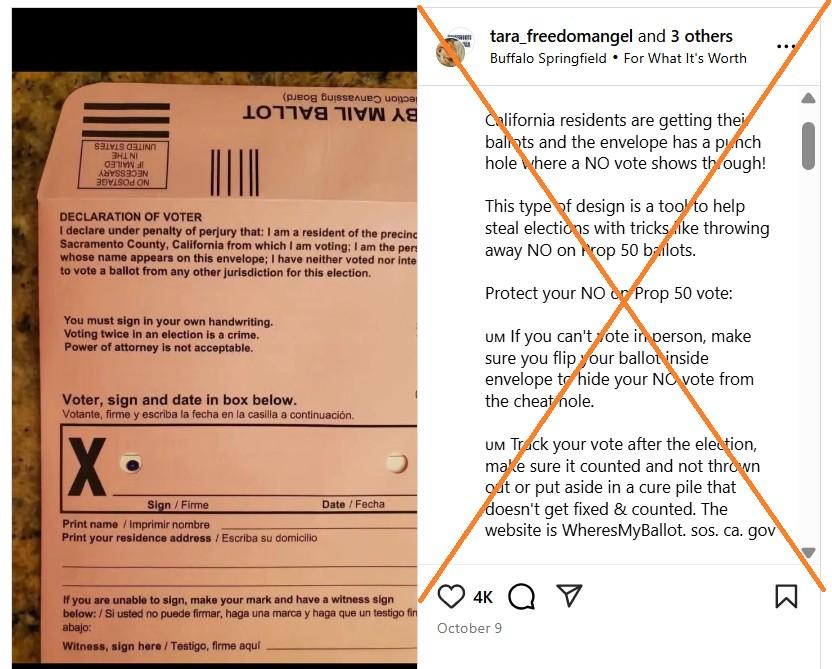
Steve Hilton, a former Fox News contributor and a Republican candidate for California governor, called on X for the election to be "suspended until all ballot irregularities are fixed."
Similar posts questioning the ballot envelopes and hinting at fraud spread widely on X, Facebook, Threads, TikTok, YouTube as more than $140 million has been put into the fight for votes in the November 4 special election on Prop 50, also known as the Election Rigging Response Act (archived here).
California's Governor Gavin Newsom put the measure forth to allow the state to create temporary congressional districts for the next two elections, with the power to set boundaries returned to an independent commission thereafter.
Democrats say the effort is necessary to counter what they see as President Donald Trump's effort to rig next year's congressional elections to safeguard his slim Republican majority.
The move came after weeks of maneuvering in Texas, where Governor Greg Abbott -- acting at Trump's behest -- redrew electoral districts to benefit his Republican Party, a process known as gerrymandering.
The redistricting battle adds a high-stakes element to elections in 2026, which will decide if Republicans maintain control of the US Senate and House of Representatives.
But the California Office of the Secretary of State told AFP in an October 21 email: "There is no need for any concern."
The envelope design functions as an accessibility feature for sight-impaired voters, who can use the holes as a guide for where to put their required signature, the office says on its website (archived here).
The secretary's office said it does not print, review or approve ballot envelopes, which are the purview of counties. Ballot papers also vary across the state depending on if there are local races in addition to the question on Prop 50 (archived here).
Sacramento County, which is singled out in many of the posts spreading online, responded to the controversy on its website, saying that "there is no way to determine how a voter voted through this small hole" (archived here).
For those concerned, the county says: "There are at least eight ways to insert a ballot card into the return envelope, and only two of these might result in a bubble being visible through the hole." They also put out a video demonstrating best practices for returning mail ballots (archived here).
The Sacramento County Department of Voter Registration and Elections has recently learned about online posts about the Statewide Special Election ballot and envelope. These posts claim that when folded and placed back in the return envelope, a voter’s ballot selection can be seen… pic.twitter.com/AodkXqPGQo
— Sacramento County (@SacCountyCA) October 8, 2025
The county's website adds that the punched holes are not a new feature for the 2026 special election, but have been in use since 2008.
Other counties told local media that ballot envelopes are designed and printed before the ballots themselves.
FactCheck.org debunked similar claims about the California mail ballot envelope design during a 2021 recall election of Newsom.
Recommended design
The nonprofit Center for Civic Design has developed a template for vote-by-mail envelopes that recommends the holes "as a signature guide helping blind voters complete the form independently" (archived here).
Whitney Quesenbery, chief program officer for the center, told AFP on October 22: "We always recommend this."
She said her organization has worked with counties in California and many other states to design materials that comply with the Help America Vote Act and allow everybody to vote independently and privately in the same manner.
California is not alone in adopting the envelope design, with holes similarly implemented in other jurisdictions such as Oregon and Washington state (archived here and here). Pennsylvania requires counties providing envelopes to blind and low-vision voters to hole punch the return envelope (archived here).
Quesenbery said another perk of the holes is to help election workers ensure they are counting all ballots.
"When you have a stack of envelopes that have been opened and the ballots taken out, and you're about to store those envelopes, you can see through the hole that you haven't left any ballots behind."
The practice of stringing zip ties through the holes to ensure empty envelopes was captured in AFP photos from the King County Department of Elections in Renton, Washington and the Salt Lake County elections office in Salt Lake City, Utah in 2020.
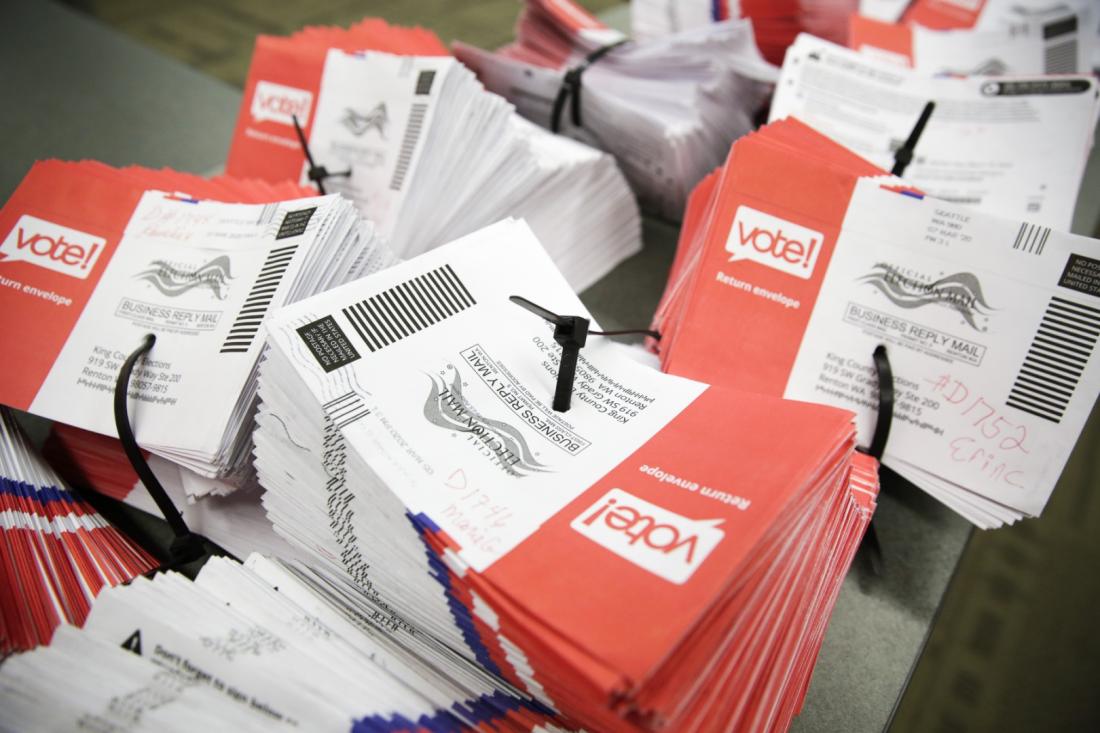
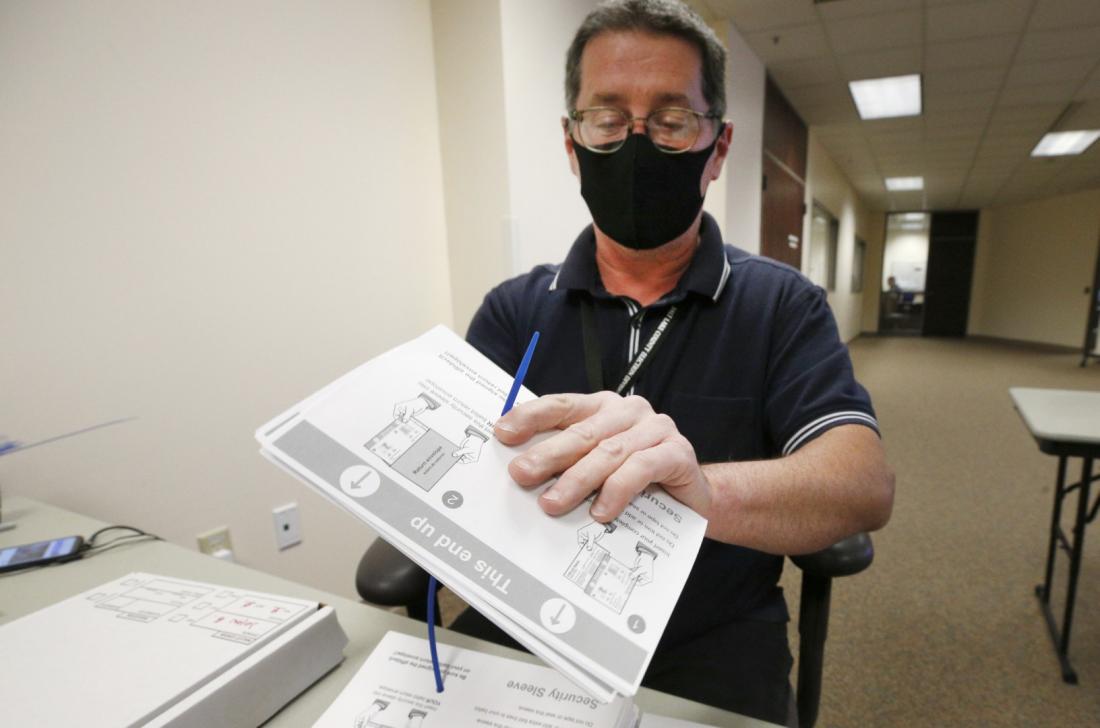
Find more of AFP's misinformation reporting on US politics here.
Copyright © AFP 2017-2025. Any commercial use of this content requires a subscription. Click here to find out more.
Is there content that you would like AFP to fact-check? Get in touch.
Contact us


